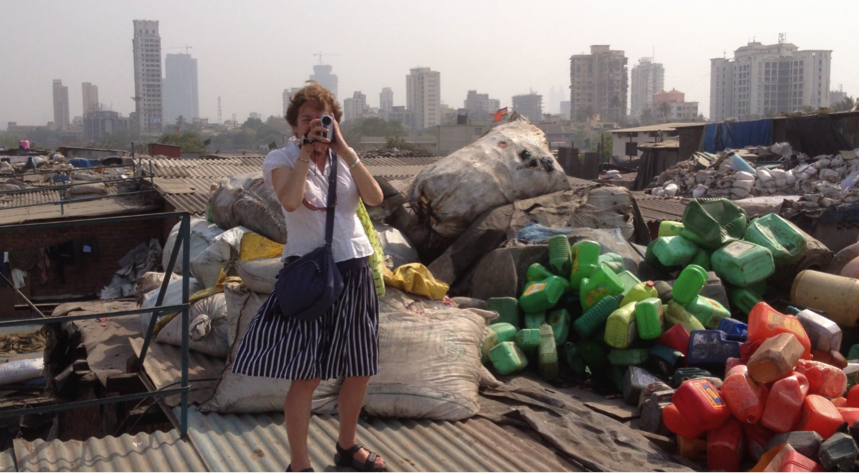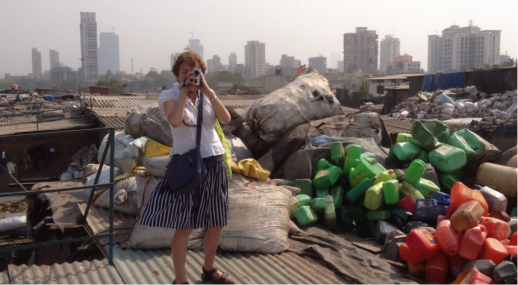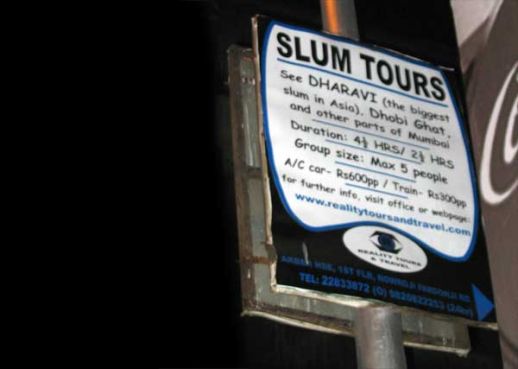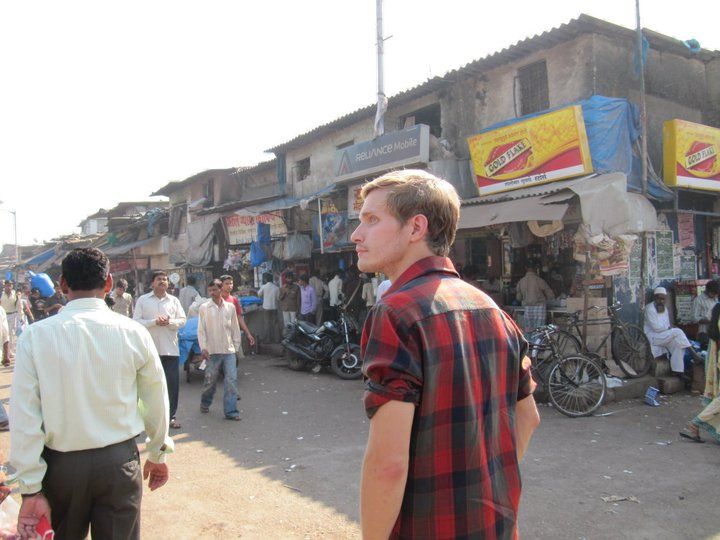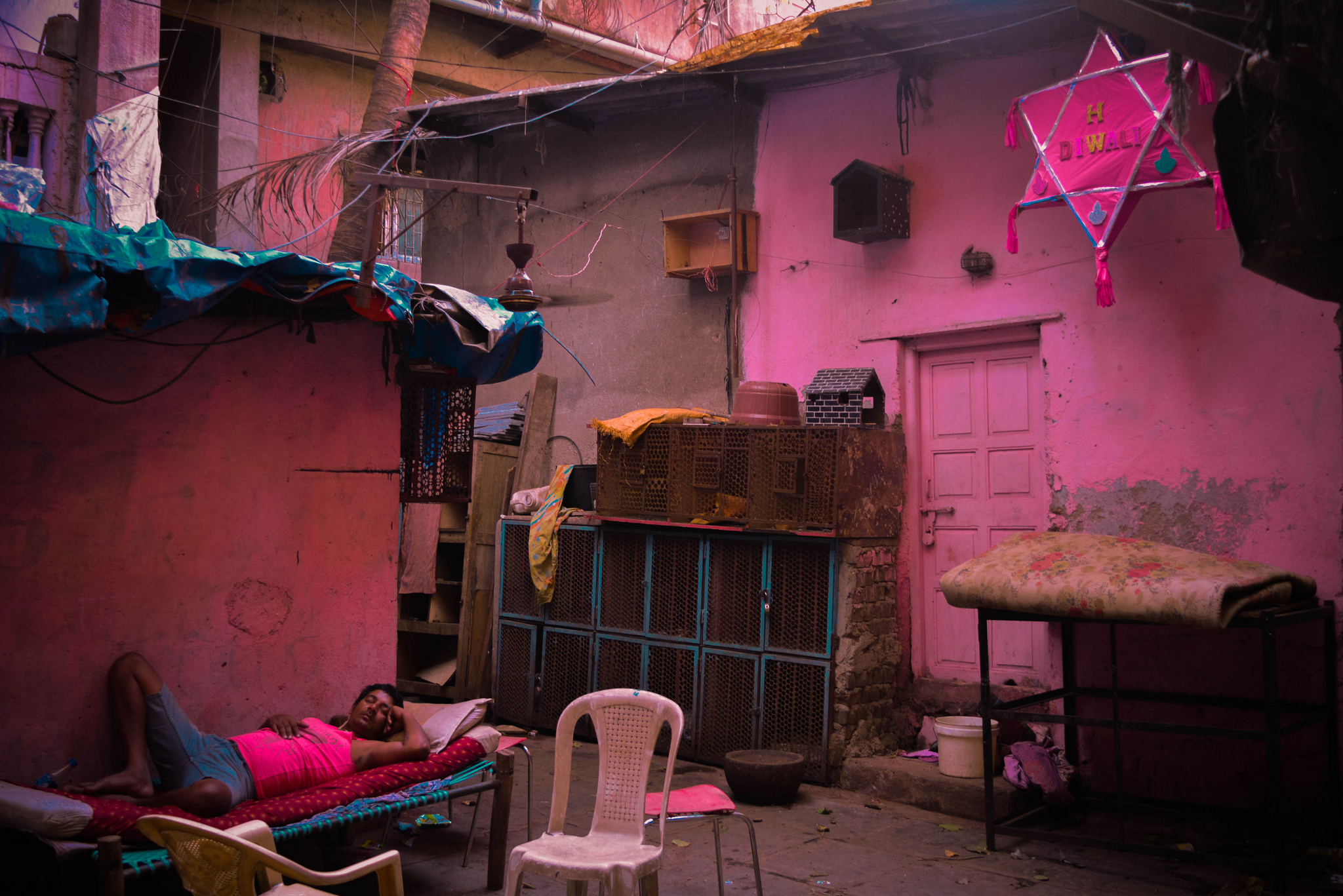Should Dharavi be ashamed of itself?
Should Dharavi be ashamed of itself?
Tourism in Dharavi is booming. An estimated 18.000 people paid for a tour of Dharavi in 2013, numbers have been growing with double digits, every year since tourism here started in 2006. Most tourists come for three-hour tours in small groups, and 90% are foreigners. Dharavi’s tourism industry now consists of several operators and the biggest ones are placed as the top four activities (out of over 100) on the Mumbai page of Trip Advisor, the global social media site for travel and tourism ratings.
Tourism in Dharavi is controversial. Voices on Trip Advisor speak a clear language: Under the heading ‘it should be removed from Trip Advisor’ a commentary on Dharavi in January 2013 states:
‘It is not the place to visit nor the place to be proud of Guys we should do something about this The westerns thinks that we live slums have tan false idea of it. We have to do something about this. I’m ashamed of it . It’s something we should be ashamed of‘
Is Dharavi something to be ashamed of? Should ‘we’ be ashamed of Dharavi? And who is this ‘we’? The people of Dharavi, Mumbaikers, Indians, the people of the world?
Amartya Sen once called shame the irreducible core of poverty. What he meant is that poverty comes with stigma and social exclusion, that being poor makes you feel like being unworthy. Reviewing a recent book on the stigma of poverty, Roland Lomme summarises:
‘Poor people are often ashamed of their own condition; in a prosperous society, they feel inadequate, having personally failed; they resent being dependent from state assistance or their lack of agency in social assistance programs such as workfare; they feel dehumanized by their deprivations and subjected to public contempt or even reprobation. This adds an important dimension to income poverty and other deprivations captured under various poverty indexes. Poverty is not only an economic or social condition, it affects individual psyche, self-esteem, self-confidence. Poverty is insulting poor people’s dignity.’
These observations confer with many of our experiences. They highlight a symbolic economy that stands along side the ‘real’ economy. Accordingly the moral worth of a person relates to their wealth. What we need to note here, however, is the political construction of worth and worthlessness in the symbolic economy of shame. The link of poverty and shame is not a given, something that poor people necessarily feel, but the result of processes in which our shared notions of worth and wealth are formed.
Touring Dharavi it becomes obvious to many visitors, that people in Dharavi might be poor in relative terms, but they are not very ashamed. There is instead a lot of pride. It also pretty obvious why there is pride. The people of Dharavi, over several generations, have achieved small and large wonders. Migrated from poor villages, they have laboured; build houses, roads, schools, businesses, futures for their kids, literally out of mud. The state was mostly absent, and if present then as obstacle, rarely as a help. So people here might be poor when compared to Indian elites, but they are rich when compared to where they came from.
So why should they feel ashamed? Or rather, who wants them to be ashamed?
Just as the individual feeling of shame is linked to ‘real’ material poverty, the symbolic economy of shame and poverty is linked to the ‘real’ economy. In the real economy labour needs to be cheap. The cheaper the labour the better for the ones who are already rich. But how do you keep labour cheap? Historically the best way to keep labour cheap is by denying it visibility, recognition, and rights. While there are many ways of doing so, including the repression of labour organisation, one of the more successful ones is to project moral unworthiness on labourers, to dehumanize them.
I have visited several low income neighbourhoods around the world; they often have their own categorical names, townships, favelas, or the generic slum. What is significant here is the spatial dimension of the stigma attached. With it, it doesn’t matter anymore how much individuals here earn, how successful their businesses are, how well they build their houses, how well they plan communal living in their neighbourhood. Once a neighbourhoods is described as a slum, then stigma and shame of poverty are upon it, regardless of facts. Often this serves the interests of the richer parts of the city, be it to keep labour costs down, be it to enable real estate speculation. It results in the two most prevalent modes of urban slum policy globally: ignorance and neglect on the one hand and removal, at least ‘transformation’ in grant schemes like the Dharavi Redevelopment Plan on the other.
Against this background, how does it sound when commentators are claiming on tripadvisor that ‘there is nothing to see’ in Dharavi?
“Never ever try to visit this place. It is not a place where you can enjoy anything. It is sad that the website has put this under attraction section.“
It sounds like Dharavi should remain invisible, ignored, on the fringes and that its people should continue to feel like second or third class Mumbaikers, ashamed of their poverty.
Tourism disturbs, ignores this attempt. Tourists are attracted to Dharavi, often for pretty dubious reasons. Some tourists seek adventure, some want the thrill, some just want to come home and say they have been. Others romanticise poverty and seek to find their true selves among those who live by the bread line. Sometimes they follow the beaten track of ‘Othering’, searching for European or Western identities in encounters with projections of an exotic urban jungle. In sum however individual motives don’t matter much.
What matters is that tourists value Dharavi, make it visible, find it beautiful and spectacular. They – often inadvertently – intervene into the symbolic economy of shame and may help to reverse the stigma attached to the place. Thus tourism might serve an agenda that increasingly emerges across political and social discussions about low income neighbourhoods: let’s start paying attention to them, not as problems, shame to themselves and to all of us, but as places full of ideas towards solutions. It is worth considering how this potential of tourism can be nurtured more.
Fabian Frenzel is a lecturer at Leicester University and Marie Curie Fellow at the University of Potsdam, Germany. His research and interests cover democratic politics with a special focus on the role of leisure, mobility and culture trans-national political action and the potentials and limits of a ‘globalisation from below’.
